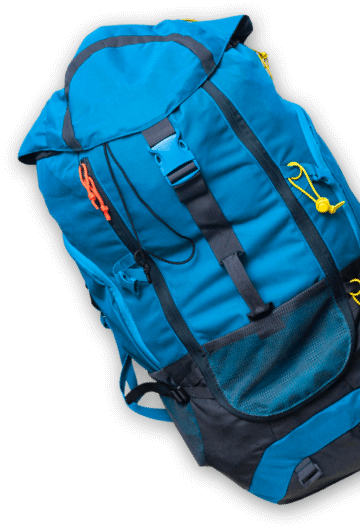25 Apr 24
Everything You Need to Know About Hiking Japan’s Michinoku Coastal Trail
The Michinoku Coastal Trail is a long-distance hiking trail on the north-eastern Pacific coastline of Japan’s stunning and remote Tōhoku region. It’s one of the most diverse and immersive trails you’ll find in Japan and destined to become as iconic as the famed Kumano Kodo.
When you walk the Michinoku Coastal Trail you’ll experience a unique journey through a truly authentic part of Japan that sees few international travellers.
Here’s everything you need to know.
Where exactly is the Michinoku Coastal Trail?
You’ll find the Michinoku Coastal Trail in the beautiful Tōhoku region on the main island of Honshu. The trail hugs the famed Sanriku Coast, connecting the city of Hachinohe in the north with Soma in the south. It weaves its way through four prefectures – Aomori, Iwate, Miyagi and Fukushima.
What’s the story behind the Michinoku Coastal Trail?
The Great East Japan Earthquake and tsunami that struck on 11 March 2011 caused extensive damage and loss of life in the Tōhoku region. The Michinoku Coastal Trail project emerged as part of the recovery efforts. There was a desire to revitalise the local economy by attracting visitors to the scenic coastal areas while also providing opportunities for local residents to engage in tourism-related activities. Existing trails were merged, creating this newly named full-length trail. Sometimes you’ll hear people refer to a particular section of the trail by its original name. While the locals have vivid memories of the devastation of the 2011 tsunami and earthquake, the villages have mostly been rebuilt and hikers are greeted warmly.
When did the Michinoku Coastal Trail open?
The trail officially opened in June 2019 but the pandemic kept most international travellers out until late 2022. To enhance the hiking experience, there are rest areas, viewpoints, information signs and visitor centres.
How long is the trail? Can I walk a small section?
The entire trail is 1025km and can be walked in both directions. Most people opt to walk a section in the north or south. Our itineraries focus on the best and most scenic parts of this exceptionally long trail, bypassing the long road sections and offer something different and special on each day’s hike.
What’s the best way to connect with the locals?
The Michinoku Coastal Trail was created not just as a means to protect nature and help revitalise the communities along the coast, but to be a pathway through which travellers can connect with locals. Peaceful fishing villages dotted along the route offer opportunities to interact with locals and try hands-on experiences, including salt making workshops and sappa fishing boat rides.
There’s arguably no better place for connecting with locals than the restaurant-packed yokocho in Hachinohe. Yokocho are side streets packed with small bars and restaurants and in the centre of Hachinohe there are more than half a dozen of them. Friendly and lively, the yokocho atmosphere can melt any language barrier, while the eateries themselves offer up all sorts of local specialties, from freshly landed squid and mackerel to warming senbei-jiru hotpots
Where is the trailhead?
Kabushima Shrine in Hachinohe City (Aomori Prefecture) marks the northernmost trailhead of the entire Michinoku Coastal Trail. Sitting atop a small hill protruding into the Pacific, no other shrine in Japan looks quite like Kabushima. Not in the gull-breeding season at least! From late February to early August, close to 30,000 gulls swirl and squawk on and above the shrine’s grounds, creating a very distinctive starting point for an epic hike. The shrine is a protected breeding ground for the birds and where fishermen have long come to pray for safety at sea.
What are some of the highlights of walking the Michinoku Coastal Trail?
- The sea caves and dramatic rocks of the 200m-high Kitayamazaki Cliffs (Iwate Prefecture) offer panoramic views of the Pacific Ocean. The scenery from the observation platforms will take your breath away.
- Ranked as one of the best beaches and swimming spots in Japan, Jodogahama Beach (Iwate Prefecture) is known for its mesmerising cobalt blue waters, white pebbles, and distinct hexagonal rock formations that resemble giant steps.
- The Sunday morning Tatehana Wharf Market is the pride of Hachinohe (Aomori Prefecture) and the largest in Japan. It is one of the hottest spots in Hachinohe and an absolute must-visit on any trip to the area.
- The elevated coastal terrace and vast grassy meadows of the Tanesashi Coast (Aomori Prefecture) are awe-inspiring. This 10km pristine stretch of shoreline is adorned with sandy beaches, tranquil pine forests, iconic shrines, and breathtaking views of the sea, mountains and villages.
- Kesennuma (Miyagi Prefecture) is one of the bigger cities along the Sanriku Coast, offering visitors a variety of attractions, especially seafood-related ones! Head to the Kesennuma City Disaster Prevention Center for some unique insights.
- The 260 islands of Matsushima Bay (Miyagi Prefecture) are collectively considered one of the three most scenic spots in Japan. They are adorned with pine trees and ancient temples. Cruise the bay for a unique perspective or explore the history and hidden features of Zuiganji Temple.
- On Tashirojima Island (Miyagi Prefecture) feline inhabitants roam freely and vastly outnumber people. A visit to ‘Cat Island’ makes a great day trip. Cats are thought to be lucky in Japanese culture, bringing good fortune and wealth. The locals of Tashirojima Island make sure they’re well-fed for this reason.
- The area around Kuji has fishing villages, rivers, beaches and mountain passes offering a memorable blend of blue waters, rugged rocky outcrops and lush green forested areas.
- Nestled on the northern coast of Iwate Prefecture, Fudai village is renowned for its massive seawall, which played an important role in saving the lives of approximately 3,000 residents in the 2011 earthquake and tsunami.
And that’s just for starters! There are many more exciting things to see in the central and southern sections.
What’s the food like?
You are in for a treat! The Michinoku Coastal Trail passes through the Tōhoku region of Japan, known for its diverse culinary traditions and local specialties. Super fresh seafood is prominent. The Sanriku Coast is one of the largest oyster cultivation areas in Japan – Miyagi oysters are famous and prized for their flavour. Scallops caught in Mutsu Bay are the first thing people think of when it comes to seafood in Aomori. Look out for red snow crab too. The sashimi and sushi options are exquisite. Then there’s luxurious bowls of tasty noodles, soups, curries and hotpots and Japanese barbeques with top-quality Wagyu beef. You’ll also need to prepare your palate for delicious desserts and sake! There are convenience stores and vending machines in some towns along the trail where you can buy snacks and drinks.
What’s the accommodation like?
On the Michinoku Coastal Trail you will stay in a variety of accommodations, including western-style hotels, luxury glamping tents (on our guided trip), and Japanese style hotels with tatami mat flooring, futon bedding and onsen facilities. We have carefully selected each establishment for its location, services and/or the experience offered. Pillows are usually quite hard in Japan, so we recommend bringing your own travel pillow if you prefer something softer.
How fit do I need to be to walk the Michinoku Coastal Trail?
The Michinoku Coastal Trail is best suited to those with a solid level of physical fitness who are confident hikers with multi-day trekking experience. The wild and varied landscapes include red pine forest paths, sparkling inlets, grassy pastures and jagged tree-covered cliffs. The trail has many steep ascents and descents, sometimes on stone and log stairs, which can be covered with moss and leaves. With patches of trail passing through hand-dug tunnels, across idyllic beaches, and up and down the occasional ladder, it will bring out your adventurous spirit.
Is there a way I can document my journey on this unique trail?
Yes! If you’d like a souvenir from your hike on the Michinoku Coastal Trail you can collect stamps in a hiking passport. As you make your way along the coast, you’ll see that each of the 28 municipalities the trail passes through has its very own stamp. You can use the notebook-sized hiking passport to collect these stamps, take notes, and document your journey. It’s durable and will withstand a lot of hiking, writing and stamping without bending. You can also buy town pin badges as a keepsake.
Is it easy to access the trail from Australia?
Yes! Head to Tokyo’s Narita or Haneda International Airports, then take a 3-hour Shinkansen (bullet train) from Tokyo Station to Hachinohe City. A local connection will take you to the trailhead.
When is the best time to walk?
The Michinoku Coastal trail can be hiked year round, however the weather and scenery do vary greatly. From mid-March to mid-June (spring) the flowers in bloom add wonderful colour to the diverse landscapes and the weather is generally mild, making it comfortable for hiking. September to mid-November (autumn) also offer pleasant temperatures and the changing colour of the leaves provides a stunning backdrop.
In the winter months, snow can impact the ease and enjoyment of hiking. Even though the daylight hours are shorter, you’ll have great, clear views.
Hiking in July and August is really not recommended due to the heat, humidity and rainfall. Additionally, if you hike in these summer months you may experience the Yamase wind. This is a cold and moist north-easterly that lowers the temperatures along the coastline, which is nice for hiking, but the low cloud also blocks the views.
Is the route well-signed?
There are some stretches along the Michinoku Coastal Trail without clear signage. Aomori and Iwate are better marked than the others. If you are walking self-guided, you can use our unique navigation app to help you easily find your way.
What we offer
With expansive coastal views, the freshest seafood, soothing hot springs, and memorable encounters with warm-hearted locals, the Michinoku Coastal Trail is a destination like no other. Book your adventure today! We’re the only Australian operator to offer this walk.
- View all our walks on the Michinoku Coastal Trail

Written By
Samantha McCrow
Sam is an seasoned hiker and travel writer with 20+ years experience as a content and marketing specialist. She started out as a commissioning editor for Lonely Planet guidebooks and now regularly shares stories and insights about the world's most iconic and rewarding hiking trails.

